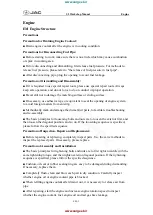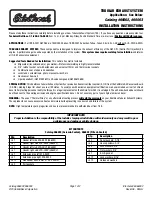
recuperation. Have the radar sensors checked
at a qualified specialist workshop immediately.
Automatic adjustment of recuperation
on downhill gradients
The vehicle can detect steep downhill gradients.
To reduce acceleration downhill and to charge
the high-voltage battery, recuperation is
increased steplessly. This is comparable to the
engine brake in a combustion engine when you
downshift a gear on a downhill gradient.
Automatic adjustment of recuperation on down-
hill gradients is available in level D
AUTO
or on
vehicles without steering wheel gearshift pad-
dles in level D.
Intelligent recuperation
The vehicle uses the map and camera data of
Traffic Sign Assist in addition to the sensors of
COLLISION PREVENTION ASSIST PLUS during
radar-based recuperation (D
AUTO
). The rate of
recuperation is then automatically adjusted to
the current traffic situation, taking the current
and future maximum speed into account.
High-voltage battery
Important safety notes
G
DANGER
The vehicle's high voltage electrical system is
under high voltage. If you modify components
in the vehicle's high-voltage electrical system
or touch damaged components, you may be
electrocuted. The components in the vehi-
cle's high-voltage electrical system may be
damaged in an accident, although the damage
is not visible. There is a risk of fatal injury.
Do not touch any high-voltage components
after an accident and never modify the vehi-
cle's high-voltage electrical system. Have the
vehicle towed away after an accident and the
vehicle's high-voltage electrical system
checked by a qualified specialist workshop.
G
WARNING
In the event of a vehicle fire, the internal pres-
sure of the high-voltage battery could exceed
a critical value. In this case, flammable gas
escapes through a vent valve in the vehicle's
underbody. The gas can ignite. There is a risk
of injury.
Leave the danger area immediately. Secure
the danger area at a suitable distance, whilst
observing legal requirements.
G
DANGER
Connecting the charging cable to the mains
supply via incorrectly installed mains sockets
or by means of adapters, extension cables or
similar could cause a fire or an electric shock.
There is a risk of fatal injury.
To avoid such risks, observe the following:
R
Only connect the charging cable to mains
sockets:
-
which have been properly installed and
-
which have been inspected by a qualified
electrician
R
For safety reasons, only use charging
cables which have been supplied with the
vehicle or which have been approved for
this vehicle.
R
Never use a damaged charging cable.
R
Do not use:
-
extension cables
-
extension reels
-
multi-outlet sockets
R
Never use socket adapters to connect the
charging cable to the mains socket. The
only exception is if the adapter has been
tested and approved by the manufacturer
for charging the high-voltage battery of an
electric vehicle.
R
Observe the safety notes in the operating
instructions for the socket adapter.
G
DANGER
Connecting the charging cable to the wallbox
via an incorrectly installed wallbox or adapter,
extension cable or similar could cause a fire or
an electric shock. There is a risk of fatal injury.
134
High-voltage battery
Drivi
ng
and
parking
Summary of Contents for B 250 e 2015
Page 2: ......
Page 3: ......
Page 289: ...286 ...
Page 290: ...287 ...
Page 291: ...288 ...
Page 292: ......
Page 293: ......
















































